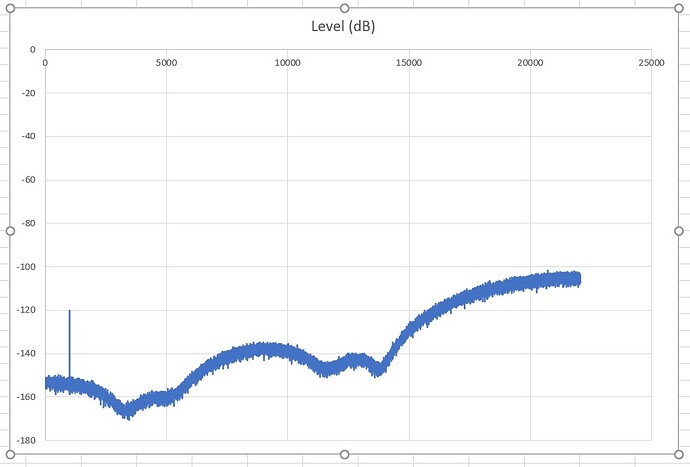Only if played on a wind up gramophone. Electricity is not natural.
Fundamental frequencies almost never exceed 5kHz. The first harmonic, 10kHz, is much reduced in volume. The next harmonic, 15kH, also has a very significant drop in volume. By the time you reach the 20kHz harmonic, volume levels quite often will be below the threshold of hearing. Rarely will there be anything significant above 10kHz, due to the Fletcher-Monson curve. That is why some of the some of the best ears in the world only hear up to 8-10kHz. Music below 5kHz is what defines what we hear 99% of the time. Plus, how many times does an instrument play even close to it’s highest note?? Very rarely, I would imagine.
I assume you know that the higher sample rates means that low pass filters are less likely to negatively affect the audio we can hear. Also, you conveniently forget that 24 bits allows 16,777,216 amplitude values while 16 bit allows only 65,536 values. You can argue that 96dB is enough dynamic range and that low pass filters are really good these days, but that is just rationalization for your position.
I am perfectly fine with you saying you can’t hear a difference. Depending on the quality of the recording and mastering, I often can’t hear a difference. In my opinion, the quality of the mastering is far more important that the sample rate and bit depth. But, when I can hear a difference due to sample rate and bit depth, it matters!!
A good, fast roll-off low pass digital filter today can achieve an in-band ripple of 0.0001dB and an out-of-band attenuation below -100dB. That’s not going to negatively affect any humanly perceived audio.
96dB is totally adequate. From a quiet room at around 30dB to the threshold of pain at around 120dB, you have about 90dB. But you missed the fact that 16bit achieves 120 dB perceived dynamic range, just in case you have super-human hearing.
“Can achieve 120dB” are the words I would use. Those extra 4 bits really apply to noise reduction and not dynamic range. 16 bit recordings cannot have extra dynamic range added to them. The data is not there.
Isn’t noise floor the lower limit of dynamic range? The upper limit is fixed, so reducing the perceived noise is exactly how you increase perceived dynamic range.
Using noise shaping, I can encode a very audible 1kHz sine wave at -120dBFS with 16 bits. The data is very much there. Here’s the spectrum, generated with Audacity. The hairy line is the noise floor, which is below -100dB across the board. In the areas where hearing is more sensitive, the noise floor dips below -120dB. Around 3kHz, it even dips below -160dB. The 1kHz peak is clearly visible.
About three weeks ago, I did an experiment by ripping a very well recorded CD to 44.1/16 flac, 96/24 flac, 192/24 flac, DSD64, and DSD256. There was a marked improvement with each higher step, except the jump from DSD64 to DSD256. The improvement, I’m sure, is the oversampling let my DAC use more benign filters. But I was very puzzled why the DSD256 did not improve, but was only on par with 96/24 flac.
The key word here is “perceived”. It’s not real…
Oh please. Sound is perceived. Besides, the spectrum is as real as it gets.
Physics explains this. Sound waves interact with one another between the transducer and your ear. So even if you cannot hear them directly, the presence of sound waves that we cannot hear shape the sound waves that we do hear. Distant Quasars won’t have any affect on our hearing because pressure waves do not travel through space. 
Many scientific studies have determined that sounds outside of our hearing threshold, especially infrasound, have an impact on our emotions such as fear and anxiety. So while we aren’t hearing these sounds, they are still interpreted by the brain. So just because something is not sensed through our traditional senses does not mean it does not affect us, or surrounding waves that we do traditionally sense
One more reason to avoid ultrasounds and infrasounds in our music.
Ha ha ha! 
To come back to physics, sound waves, like electromagnetic waves, obey the superposition principle and don’t disturb each other when passing through same space.
That is incorrect. Their affects are additive so that if two waves of the same magnitude occupy the same space, the resulting wave will be a single wave of twice the magnitude.
Yes, but outside the common space, they continue undisturbed.
Who knew that listening to music was such hard work? I’m glad I don’t get all scientific over it.
Right, but we are talking about when the waves are in the same space
That’s why we have sound machines, 'cause we didn’t get all scientific over it.
Two waves add together in the same space, but they don’t affect each other, as you said. Adding one frequency to a mix does not affect the amplitude and phase of others.
Yes they do. The new wave is a combination of the two waves. What you are saying applies when waves are moving in different directions. Noise cancellation works because of the fact that waves superimpose. Two waves of opposite magnitude cancel out and produce no sound
